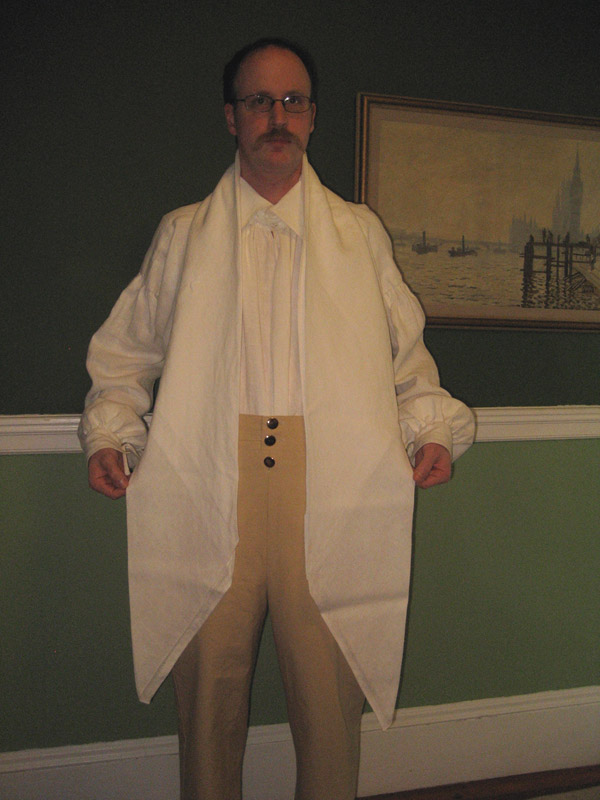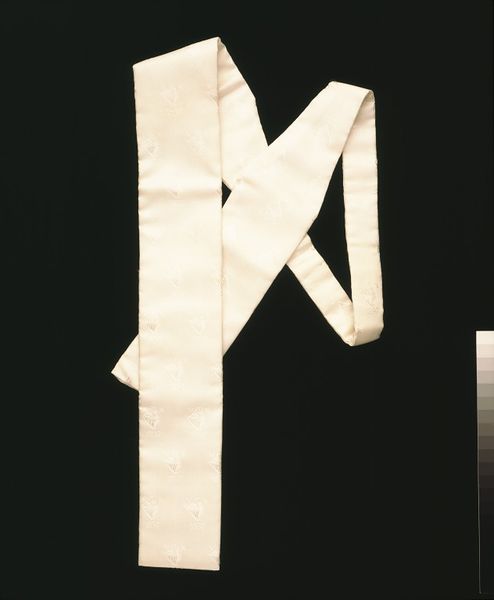"During second half of the 19th century four distinct styles of necktie evolved. They were given a great many different names, which can be confusing. The main categories were: (i) bow tie; (ii) scarf or neckerchief; (iii) Ascot; and (iv) four-in-hand, or sailor's knot, generally referred to as the 'long tie'."--Victorian & Albert Museum
Now we're getting somewhere. All I have to do is define each category. Scarf should be easy: A single unsewn piece of cloth in either rectangle or triangle shape. Long tie would be one that looks thin and long, much like the ties of today. In fact, the picture for the above link looks like it is a long tie. The ascot would be the same thing but with wider material, kind of like the modern wedding ascots. Finally, there is the bow tie. Any piece of material that is long enough can be made into a bow tie, whether it is the western ribbon bow or a bowed ascot. Now about some pictures:
Where does this all lead? Both the scarf and the Ascot can be tied into a bow, so using one of those patterns can result in the looks I am looking for. The long tie is more modern than I want, so I can avoid that style. The Ascot can also be tied into the ruche knot, also known as a scrunchie knot. Therefore, if I can find the correct Ascot pattern, I should be covered on all the outfits I am planning.
As always, I welcome your comments. Click on the Comment link below; it may say "No" or have a number in front of it.
Now we're getting somewhere. All I have to do is define each category. Scarf should be easy: A single unsewn piece of cloth in either rectangle or triangle shape. Long tie would be one that looks thin and long, much like the ties of today. In fact, the picture for the above link looks like it is a long tie. The ascot would be the same thing but with wider material, kind of like the modern wedding ascots. Finally, there is the bow tie. Any piece of material that is long enough can be made into a bow tie, whether it is the western ribbon bow or a bowed ascot. Now about some pictures:

|
(i) Bow Tie (one of my favorite bow tie pictures) Image stolen from the Royal Steamline website, though the original image was from an Etsy shop that seems to no longer exist, called Gentleman's Jabot. |

|
(ii) Scarf or neckerchief Image stolen from the Victorian Tailor blog. |
|
|
(iii) Ascot Image stolen from the Elegant Ascot Cravats and Neckwear eBay shop. |

|
(iv) Four-in-hand or long tie Image stolen from the Victoria & Albert Museum website. |
As always, I welcome your comments. Click on the Comment link below; it may say "No" or have a number in front of it.

No comments:
Post a Comment
Put comments here.